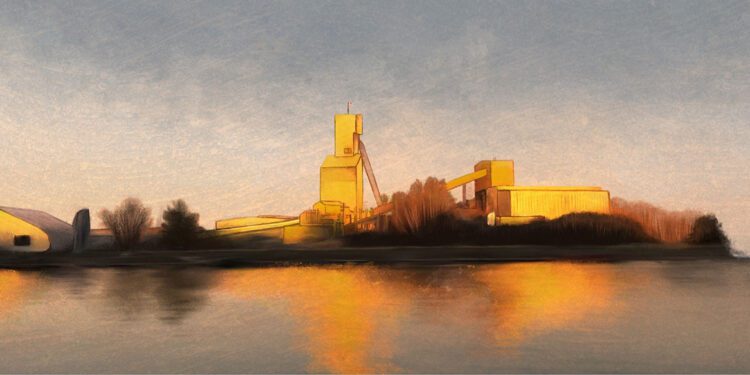1911 Gold Corporation (TSXV: AUMB) (OTCQX: AUMBF) has completed its first phase of 2022 exploration drilling, testing multiple high-grade gold targets at the 100%-owned Rice Lake and Apex (Snow Lake) Gold Properties in Manitoba, and will initiate the 2022 field exploration programme in the coming weeks.
2022 Exploration Drilling Programme
In Q1-Q2 2022, the company completed 9,202 m of exploration drilling in 35 drillholes, testing 18 targets across four project areas on its Rice Lake and Apex properties in Manitoba.
Drilling included follow-up on priority intercepts from the company’s previous drilling at the Tinney and Bidou projects, utilising detailed 3D structural models to selectively target favourable structural-stratigraphic traps with potential for significant high-grade orebodies.
In addition, maiden exploration drilling was completed on several new targets at Tinney and Bidou, and at the Wallace project where the Company tested five targets in rocks equivalent to the prolific Balmer assemblage in the adjacent Red Lake district. These ‘Red Lake-style’ targets occur in a regional-scale fold hinge adjacent to the Wanipigow fault, comparable to the large-scale folds and faults that localize gold mineralization in the Red Lake district, most notably at the Red Lake mine and at the Dixie project.
At the Apex property near Snow Lake, Manitoba, drilling focused on previously-untested large-scale chargeability anomalies identified by the Company’s induced-polarization (IP) geophysical survey in 2021. Three separate IP targets were tested, as well as a quartz-sulphide vein system that had previously been tested by only shallow close-spaced historical drilling.
“The company is pleased to have drill-tested all but one of its planned targets in Q1-Q2 2022, and is strongly encouraged by the structures, alteration and quartz vein systems observed in drillcore.
‘With all samples now at the assay laboratory, we look forward to releasing new drilling data as final results are received for each project, while also commencing our 2022 field exploration program intended to advance existing projects and to initiate fieldwork at several new projects with excellent potential for large-scale gold systems”, Vice President, Exploration, Scott Anderson, said.
2022 Field Exploration Programme
Exploration in 2022 will involve mapping, sampling and surficial geochemistry to further advance the Tinney, Bidou and Wallace projects, where exploration continues to reveal evidence of gold systems with significant scale potential. Following reconnaissance and compilation work in 2021, fieldwork will also commence in three new areas along the crustal-scale Wanipigow fault, including the Palomar, Gold Creek and Whales projects. At the latter project, 2022 fieldwork will include a very high-resolution airborne magnetic survey to infill a gap in the regional dataset and to upgrade existing lower-resolution data.
Drill targeting is also ongoing for the Curries Landing project in the western portion of the Rice Lake property – an area with sparse bedrock exposure and no record of previous drilling. This project is centred on a regional-scale fold of a major geological contact adjacent to the crustal-scale Wanipigow fault. Targeting is utilizing new data from the 24-line-kilometre IP survey (Abitibi Geophysics’ OreVision system) completed in January, coupled with the high-resolution UAV magnetic data previously acquired by the Company, to identify large-scale structural targets within this untested regional-scale fold.
In addition, at the Central Manitoba project (site of the historical Central Manitoba mine, which produced approximately 150,000 ounces of gold at an average grade of 11–12 g/t gold), underground workings and previous drilling are being compiled, georeferenced and modelled, and augmented with new field data, to constrain drill targeting below historical workings.
Despite extending in length over two kilometres at surface, the vein systems at Central Manitoba were only mined to a vertical depth of approximately 100 metres, which is highly unusual for gold deposits in the Rice Lake and Red Lake belts which typically extend to depths at least as great as their surface footprint, suggesting untested potential at Central Manitoba.
In Q2 2022, the company also plans to commence exploration on its Denton-Keefer property located 30 km southwest of Timmins, Ontario, along the prolific Porcupine-Destor fault. The company has contracts in place for the acquisition of new high-resolution datasets for the property, including orthophoto, LiDAR, magnetic and electromagnetic surveys. These datasets will provide a strong foundation for exploration planning and drill targeting at Denton-Keefer; additional details will be provided once the surveys commence in late Q2 2022.
For further information please visit: https://1911gold.com/












